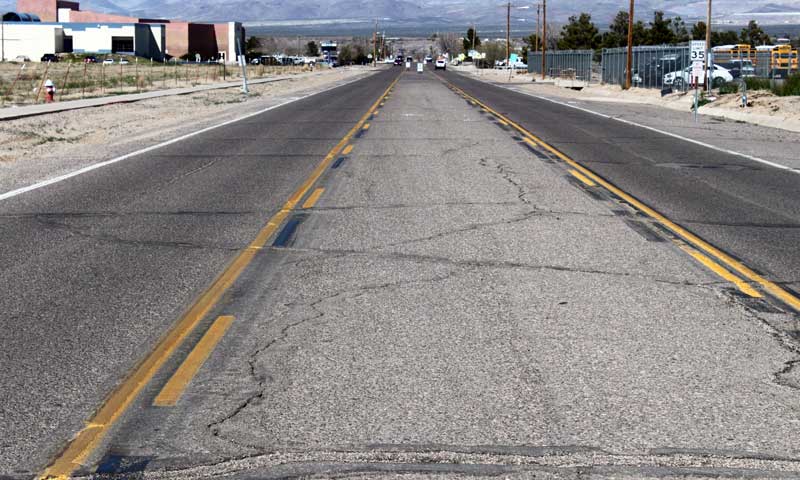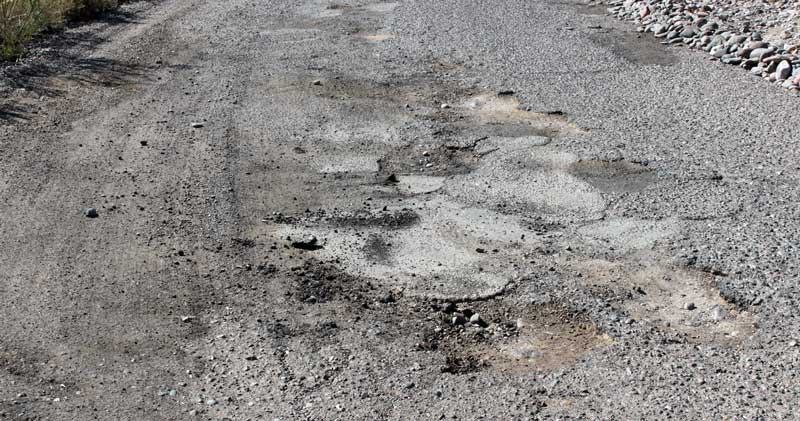Will ensure half-cent sales tax will continue to pay for road improvements and the previous streets renewal program’s debt service until paid off in 2030
By Jon Johnson
SAFFORD – It appears as if the Safford City Council has listened to its constituency . . . at least for the time being.
At its Monday night meeting, the council unanimously passed an amendment to the second reading of its sunset clause withdraw of its temporary half-cent sales tax increase. The amendment reinstates the sales tax to be only used for road improvement and the streets debt service as it was originally created and gives an end date of 2030. The sunset clause of the half-cent sales tax was rescinded, but the amendment reinstated it to simply add five years to its end date instead unless a council in the future votes to continue it.
The half-cent sales tax was enacted by council decree in November 2005 and was set to expire in 2025. The tax was initially passed to pay bonds taken out for a 12-phase streets renewal program that redid numerous streets throughout the city over a five-year timespan, including 8th Avenue. The measure increased Safford’s city tax from 2 percent to 2.5 percent. However, according to Safford Finance Officer Alma Flores, the bonds won’t be paid off until fiscal year 2030/31 due to refinancing that occurred in 2015 and not rescinding the end date would be disastrous to the city. The refinancing that was done will reportedly save Safford $700,000 over the life of the debt due to lower interest rates, according to City Manager Horatio Skeete.

Jon Johnson File Photo/Gila Valley Central: There are still more streets that haven’t been renovated, including 14th Avenue.
The tax currently generates a little more than $1.1 million per year in revenue with an average growth rate between 2 and 3 percent and makes up nearly 40 percent of the city’s total operating costs regarding its streets. Other revenue includes Highway User Revenue Fund (HURF), automobile taxes, grants and street patch funds. Roughly $500,000 of the current annual $1.1 million collected by the tax goes to pay the debt service on the bonds, according to Skeete. If rescinded, that would have opened up the annual leftover amount of $600,000 to be used as the city council pleases. With the amendment, however, that money will only be able to be used for streets. Of course with the sales tax generating more than twice what it was intended to pay for, the city could theoretically pay off the debt twice as fast and save even more money on interest it wouldn’t have to pay for, but then it wouldn’t have the extra money to do other street projects. If the city wanted to, it could honor the original 2025 end date by paying off more than required each year due to the surplus the tax generates.
However, Flores previously reported at an April council meeting that if the sunset clause was not rescinded the city would begin to have a deficit in its street’s department starting in fiscal year 2018/19 and much-needed street work, including 14th Avenue, would not be possible to fund. She added that if the sunset clause was not rescinded, by 2031 the city would have nearly an $8.2 million deficit in its street’s department. Conversely, she said if the city ended the clause and adjusted its capital projects, it would have a more than $700,000 surplus the next year and would end up with a nearly $300,000 surplus by 2031 while completing all the necessary projects.
After initially being for keeping the sunset clause and then changing his mind and being in favor of rescinding it, Safford Mayor Jason Kouts spoke about being in favor of rescinding the sunset clause but only with the amendment that the new end date be installed that would coincide with the end date of 2030 for paying off the original streets renewal project’s debt.
Councilor Gene Seale spoke about how government often turns temporary taxes into permanent ones and gave his support for the amendment giving an end date, albeit one that is five years longer than originally conceived. He then turned his support in the form of a motion to approve the amendment.
“There’s very seldom a temporary tax,” Seale said. “Governments find a way to usually extend those and my feeling is this was proposed by the original council to cover the cost of improving the streets and to end when the debt was paid off . . . I in favor of the amendment because it does cover the debt and it has a chance of going away. It will have to be looked at by future councils . . .”
In other council news:
Keeping with the streets theme, the city of Safford unanimously passed an intergovernmental agreement with Graham County allowing the city to provide maintenance to Branding Iron Lane until it can annex it into the city.

Jon Johnson Photo/Gila Valley Central: Branding Iron Lane has fallen into disrepair.
At the council’s Nov. 13 meeting, Branding Iron restaurant owner Robin Cantrell requested the city repair the road, which is riddled with potholes.
The road was initially built by the city more than 30 years ago to enable access to the restaurant, which the city annexed for the sales tax revenues. The road was then “dedicated” to the public on Oct. 2, 1981, but was never officially recognized by Graham County, in which it resides.
According to City Engineer Randy Petty, the IGA will allow the city to repair the road, which initially should cost roughly $4,000 in savings from the city’s Central Avenue road project to fill the potholes and have the road chip sealed as well.










